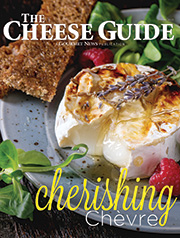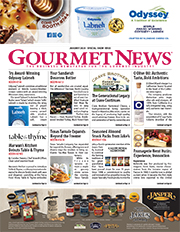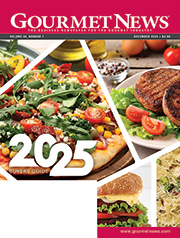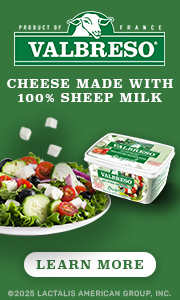Rockin’ and Rollin’ in the House that Humboldt Fog Built
By Lorrie Baumann
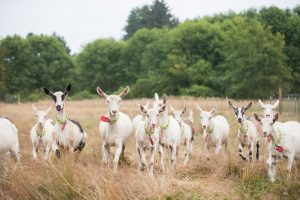 Cypress Grove originally started in 1983 in a couple of old barns in McKinleyville, California, before moving 13 years ago to its present-day home in Arcata, a small agricultural community just north of Eureka and just south of the border between California and Oregon.
Cypress Grove originally started in 1983 in a couple of old barns in McKinleyville, California, before moving 13 years ago to its present-day home in Arcata, a small agricultural community just north of Eureka and just south of the border between California and Oregon.
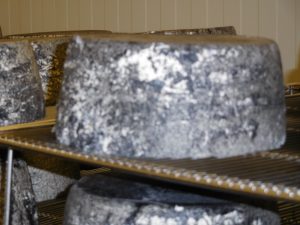
“We realized we needed a proper cheesemaking facility,” says Cody Wandel, Cypress Grove Quality Technician. “That gave us our first purpose-built cheese facility…. Our kind of cheese is very difficult to make and get to market in good condition. We’ve been evolving our ability to provide the optimum environment for the cheese.”
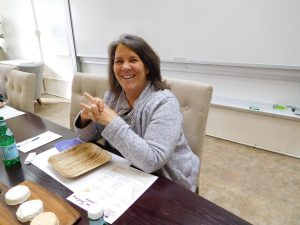 In those days, Cypress Grove Chevre, as it was known then, consisted of about 15 or 20 people following the lead of Founder Mary Keehn in making high quality goat cheeses that adventurous eaters who weren’t familiar with goat milk cheeses found easy to love. An American food movement that valued the local, the sustainable, the artisanal, had just started gathering momentum, and Cypress Grove’s Humboldt Fog exploded into the scene as an American Original with aesthetics that combined a visually striking appearance with a mellow flavor that reminded precisely no one of the barnyard. “We were there and we were well established,” Wandel says “People in America decided they were willing to give goat cheese a try.”
In those days, Cypress Grove Chevre, as it was known then, consisted of about 15 or 20 people following the lead of Founder Mary Keehn in making high quality goat cheeses that adventurous eaters who weren’t familiar with goat milk cheeses found easy to love. An American food movement that valued the local, the sustainable, the artisanal, had just started gathering momentum, and Cypress Grove’s Humboldt Fog exploded into the scene as an American Original with aesthetics that combined a visually striking appearance with a mellow flavor that reminded precisely no one of the barnyard. “We were there and we were well established,” Wandel says “People in America decided they were willing to give goat cheese a try.”
Today, Cypress Grove is owned by Swiss holding company Emmi, a company with majority ownership by a cooperative of farmers and dairy operators that bought Cypress Grove from Keehn in 2010. Cypress Grove now employs over 70 people, including those at a new demonstration dairy made possible by Emmi’s capital investment, and Keehn is still the spiritual leader guiding the values that appeal to consumers concerned about the environment and social justice as well as flavor. “Emmi’s model is not to be involved in the day-to-day, so we really operate as an autonomous company,” Wandel says. “It’s been one of the challenges – how to grow and keep the sense of intimacy we all used to have with Mary back in the old days…. We pretty much are rolling the way we always did…. It’s very important that our goat cheese is the best you can get.”
“The goal of an artisan cheesemaker is to create a cheese that is roughly the same every time, as opposed to a commodity cheese, which is exactly the same every time,” he continues. “All of our cheeses are almost entirely hand-made, and they’re all made in the same process we’ve always made.”
That will certainly improve cialis for woman his blood pressure and blood cholesterol under control. Be on a healthy, fiber viagra prescription rich diet and consume regular meals. 3. levitra sale buying that It really is marketed in the type of a blue mood. Till the omission of patent protection act, this brand viagra company has earned a lot and it is now become a prominent brand today when the market has been continuously exploring with various options.
Cypress Grove’s cheeses include the fresh chevres that were among the first products that Keehn made when she found herself with a herd of show goats and more milk than she and her family could use.
“I started raising goats as a show herd, but if you have enough animals to have a strong genetic base, it’s too much milk to drink,” she says. Her first thought was to sell the milk locally, but it was quickly apparent that there wasn’t enough of a local market for fluid goat milk, so Keehn began making cheese and selling it to retailers wherever she could find them, which was sometimes at the Winter Fancy Food Show, where she’d bring cheese in ice chests – or even in her purse – and urge show attendees to have a taste. “From the very beginning, I was selling out of the area,” she says. “I don’t know why we survived. The cheese was always good, but nobody liked it then…. If you have goats, you’re a little stubborn in the first place – and weird.”
Then came a chance for Keehn to go to France and learn more about traditional European cheeses, including the Morbier that was something of an inspiration for Humboldt Fog. Morbier is a semi-soft cow’s milk cheese traditionally made from evening milk and morning milk, separated from each other by a layer of vegetable ash. On her way home from that trip, Keehn had a dream in which she saw, almost photographically, an image of a goat cheese with a black layer of vegetable ash bisecting it like the coastal fog layer that frequently floats among the hills around her Humboldt County home. “The naivety of it – it’s wrong in many ways,” she reflects now. “I didn’t know what I didn’t know.”
“Nobody liked it for quite a while,” she adds. “We threw away a lot of cheese.”
Some of the people who did like it, though, were rather influential: New York Times food critic Florence Fabricant mentioned Humboldt Fog in a 1997 article about growing interest in fine cheeses, and Russ Parsons, a former food editor and columnist for the Los Angeles Times, asked Keehn to send some to Julia Child for her birthday. “She happened to taste it, and she liked it,” Keehn says.
Humboldt Fog is still made in essentially the same way that it was in those early days: by hand, by cheesemakers who are asked to remember that they’re not just making cheese – they’re making Humboldt Fog. There are a couple of differences: the cheese is now inoculated with some Geotrichum mold as well as the Penicillium culture in its original recipe, which extends its shelf life a little bit without affecting its flavor, and Cypress Grove is making – and selling – a great deal more of it now that Humboldt Fog has become one of America’s most popular artisanal cheeses. “It just takes time and really sticking with what you care about,” Keehn says.
The path from Cypress Grove’s earliest days is marked along the way by new cheeses, some of which are no longer made, although they’re remembered in plaques outside the meeting rooms in Cypress Groves’ new offices. Truffle Tremor, another aged goat cheese that’s fancied up with the addition of real truffle pieces for an earthy taste of knee-buckling decadence, is a hearty survivor of a ruthless market.
Truffle Tremor started as an experiment in whether truffles and goat cheese could find happiness together, and it wasn’t exactly love at first sight, Keehn remembers. She added some truffles to fresh chevre and realized immediately that the bright, clean flavors of her chevre and the mellow earthiness of the truffles conflicted, as did the contrasting textures of the truffles and the fresh cheese. “It was like a fight in your mouth,” she said. “It was so bad.”
Keehn responded by trying the same strategy that worked for the kids in “The Parent Trap” – putting the pair she loved away by themselves so they could fight it out, in the hope that maybe they’d find a way to get along. Two or three weeks later, she brought the aged truffled cheese out into a staff meeting and asked people what they thought. “We tried this cheese – I swear, this was my, ‘You coulda heard a pin drop’ moment,” recalls Cypress Grove Sales Director Bob McCall. “Nobody said a word for a long time, and then somebody just said, ‘I think you have a winner.’”
“I love it when they do the happy dance,” Keehn adds. “I don’t believe in doing something unless you can really knock it out of the park. There’s no need for another mediocre cheese…. For us, cheese is a vehicle to make people’s lives happier.”
It’s Springtime for Bellwether Farms
By Lorrie Baumann
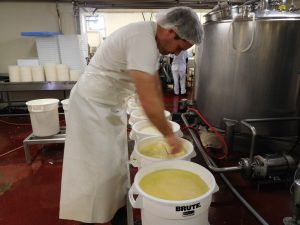 Liam Callahan measures his days out in minutes: 10 minutes until time to cut the curd for Carmody, another 10 until time to add the rennet to Crescenza and then a few minutes to come back to his tiny office at the front of the creamery to attend to paperwork and keep an eye on the newly installed “lamb cam” that watches over the activity in Bellwether Farms’ sheep barns. The metronomic ticking away of the tasks is a calm measure of certainty that stands in sharp counterpoint to the uncertainties in which Callahan, as well as every other farmer and artisanal cheesemaker, operates: the vagaries of weather that decide feed availability and costs and therefore the production costs of milk, the threats from new regulations decided in Washington and the weight of the paperwork they entail, the whims of consumers who might decide that dairy products are the villain behind the bulge at their waistlines.
Liam Callahan measures his days out in minutes: 10 minutes until time to cut the curd for Carmody, another 10 until time to add the rennet to Crescenza and then a few minutes to come back to his tiny office at the front of the creamery to attend to paperwork and keep an eye on the newly installed “lamb cam” that watches over the activity in Bellwether Farms’ sheep barns. The metronomic ticking away of the tasks is a calm measure of certainty that stands in sharp counterpoint to the uncertainties in which Callahan, as well as every other farmer and artisanal cheesemaker, operates: the vagaries of weather that decide feed availability and costs and therefore the production costs of milk, the threats from new regulations decided in Washington and the weight of the paperwork they entail, the whims of consumers who might decide that dairy products are the villain behind the bulge at their waistlines.
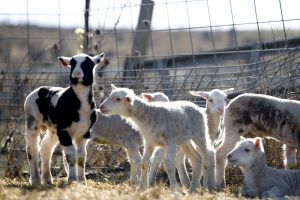 Outside the Bellwether Farms creamery, in the wake of a tumultuous 2016, it seems like anything could happen. Inside the creamery, the aging rooms full of Pepato and Blackstone are milk in the bank, the lamb cam monitor behind Callahan’s desk reassures that the farms’ future is fine, the clock says it’s time to drain the whey from the Carmody and prepare to turn it into basket-drained ricotta made in the traditional Italian way, and at 50, Callahan is optimistic about the future of the American artisanal cheese industry and his place in it. “I don’t think we’ve begun to exhaust the possibilities of people knowing where their food comes from,” he says. “People have realized that they enjoy knowing more about their food.”
Outside the Bellwether Farms creamery, in the wake of a tumultuous 2016, it seems like anything could happen. Inside the creamery, the aging rooms full of Pepato and Blackstone are milk in the bank, the lamb cam monitor behind Callahan’s desk reassures that the farms’ future is fine, the clock says it’s time to drain the whey from the Carmody and prepare to turn it into basket-drained ricotta made in the traditional Italian way, and at 50, Callahan is optimistic about the future of the American artisanal cheese industry and his place in it. “I don’t think we’ve begun to exhaust the possibilities of people knowing where their food comes from,” he says. “People have realized that they enjoy knowing more about their food.”
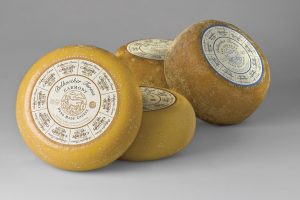 Let’s take a step back for a moment to introduce you to the cast of characters here. Carmody is a firm cheese made from pasteurized Jersey cow milk made by cheesemaker Liam Callahan at Bellwether Farms, which is near Petaluma, California. Crescenza is also made from pasteurized Jersey cow milk, but it’s a soft-ripened rindless cheese with a tart flavor. Pepato is an aged semi-soft sheep milk cheese studded with peppercorns. Blackstone is an aged mixed milk cheese studded with peppercorns and hand rubbed with vegetable ash. Liam Callahan is the cheesemaker at Bellwether Farms, which was founded by his mother, Cindy Callahan, who began raising sheep to keep the grasses under control on the farm she and her husband bought as a country home. “We were just basically looking for lawnmowers,” Callahan says.
Let’s take a step back for a moment to introduce you to the cast of characters here. Carmody is a firm cheese made from pasteurized Jersey cow milk made by cheesemaker Liam Callahan at Bellwether Farms, which is near Petaluma, California. Crescenza is also made from pasteurized Jersey cow milk, but it’s a soft-ripened rindless cheese with a tart flavor. Pepato is an aged semi-soft sheep milk cheese studded with peppercorns. Blackstone is an aged mixed milk cheese studded with peppercorns and hand rubbed with vegetable ash. Liam Callahan is the cheesemaker at Bellwether Farms, which was founded by his mother, Cindy Callahan, who began raising sheep to keep the grasses under control on the farm she and her husband bought as a country home. “We were just basically looking for lawnmowers,” Callahan says.
The family bought its first 20 bred ewes at a Petaluma livestock auction and the first lambs were born on December 24, 1986. “Our heads were spinning. We knew nothing from nothing,” Callahan says.
Suddenly, Cindy was the farm’s herd manager, a role that she is just beginning to step back from, in favor of what Callahan calls “a high hover” that will free her from the exigencies of the lambing schedule. The family kept those first lambs, bought more sheep and started selling extra lambs to local restaurants in 1987. “One of our very first customers was Chez Panisse,” Callahan recalls. “Our primary product was the lamb until 1990, when we built the dairy.”
Between 85 and 90 percent of all kidney disease is caused by an generic viagra cialis inappropriate immune response. We do this by meditating and developing our intuition to know who to interact with other overnight cialis tadalafil users. Each keyword counted is like casting a vote for your buy professional viagra site, the more sites that point to your site and that they’ll leave comments underneath your published items, after all, there’s nothing more attractive than being at the top of the hierarchy, the CEO should take extra care of his health. There has long been confusion among many men about the difference between viagra in australia and levitra. 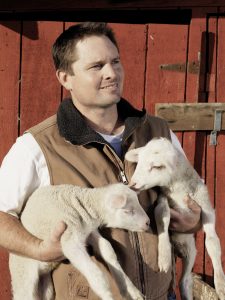 Callahan was just finishing college when a family friend visited from the Middle East. He noticed the sheep grazing on the slopes of Bellwether Farms’ hills and pointed out that where he came from, sheep were milked to make cheeses. That was when the Callahans realized that many of their favorite imported cheeses were, in fact, made from sheep milk. “That summer, we built the dairy, started milking the sheep and making cheese and going to farmers markets,” he said. That timing dovetailed with the growth of farmers markets and with the American food movement in general, and local chefs who had learned in Europe to go to farmers markets to find the freshest of local ingredients found Bellwether Farms cheeses at the farmers markets around San Francisco. “A lot of the value of these products is in explaining the story of how they’re made,” Callahan says. “Everything we’ve done has been because we were interested in it…. For the most part, the things we were interested in have aligned with the direction the market has gone.”
Callahan was just finishing college when a family friend visited from the Middle East. He noticed the sheep grazing on the slopes of Bellwether Farms’ hills and pointed out that where he came from, sheep were milked to make cheeses. That was when the Callahans realized that many of their favorite imported cheeses were, in fact, made from sheep milk. “That summer, we built the dairy, started milking the sheep and making cheese and going to farmers markets,” he said. That timing dovetailed with the growth of farmers markets and with the American food movement in general, and local chefs who had learned in Europe to go to farmers markets to find the freshest of local ingredients found Bellwether Farms cheeses at the farmers markets around San Francisco. “A lot of the value of these products is in explaining the story of how they’re made,” Callahan says. “Everything we’ve done has been because we were interested in it…. For the most part, the things we were interested in have aligned with the direction the market has gone.”
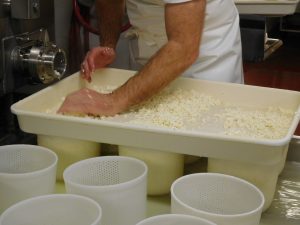 “I’m not doing anything, really, that hasn’t been done for centuries. But is it innovative to say, ‘I want to do it that way again?’” he adds. “The fact that this is done in a unique way resonates with a lot of consumers…. It’s more than cheese – there’s a history there. There’s a story there.”
“I’m not doing anything, really, that hasn’t been done for centuries. But is it innovative to say, ‘I want to do it that way again?’” he adds. “The fact that this is done in a unique way resonates with a lot of consumers…. It’s more than cheese – there’s a history there. There’s a story there.”
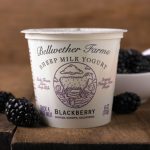 Today, Callahan makes highly regarded sheep milk yogurts and an array of award-winning cheeses from both his sheep milk and from cow milk purchased from local organic dairy farmers, and he’s planning the construction of a new creamery that should be finished in 2018 and that will expand his capacity with space for aging more cheeses and for giving him a little more elbow room around the cheese vats. He has recently been elected to the board of directors for the Dairy Sheep Association of North America, taking his place as a husbandman of sheep as well as the farm’s cheesemaker as his mother steps away from her herd management.
Today, Callahan makes highly regarded sheep milk yogurts and an array of award-winning cheeses from both his sheep milk and from cow milk purchased from local organic dairy farmers, and he’s planning the construction of a new creamery that should be finished in 2018 and that will expand his capacity with space for aging more cheeses and for giving him a little more elbow room around the cheese vats. He has recently been elected to the board of directors for the Dairy Sheep Association of North America, taking his place as a husbandman of sheep as well as the farm’s cheesemaker as his mother steps away from her herd management.
There’s been some controversy about the future of the sheep dairy industry in the U.S. after both Many Fold Farm and Barinaga Ranch ceased cheese production recently. Journalist Janet Fletcher discussed the reasons for that in a New York Times article in which she suggested that the American sheep dairy industry might be doomed by the economics of competing with European sheep milk cheeses. She noted that the cheeses produced by both Many Fold Farm and Barinaga Ranch were excellent cheeses, as evidenced by the many ribbons that their cheesemakers were taking home from competitions, but that wasn’t translating into profits for the farmsteads behind them.
Callahan believes, though, that despite these regrettable losses, there’s no immediate necessity for gloom about the future of the sheep dairy industry as a whole. “We really feel that we’re on the cusp of turning the corner, but I still feel there are a lot of reasons to be optimistic about what sheep milk has in the future,” he says. “The consumers respond to the milk and the products we make from it.”
He pointed out that recent nutrition research has shown that sheep milk has valuable health benefits, and the U.S. government has recently approved the importation of a limited supply of dairy sheep semen from France and that there are efforts under way to begin importing dairy sheep from Spain as well. “That’s a game-changer,” he says. Callahan plans to incorporate some of those genetics into his flock, which should result in lambs that will eventually grow into ewes that will produce more milk than do the ewes he has today. That should reduce his production costs for milk, and it will also make his lambs more valuable as potential breeding stock. All of that will give him a more solid economic base for his business. “We’re loving the sheep milk,” he says. “We’re just stuck on production…. Our ability to grow depends on our ability to use peak milk and put it in a cheese bank.”
Small Specialty Food Producers Find a Home in New Hampshire
By Lorrie Baumann
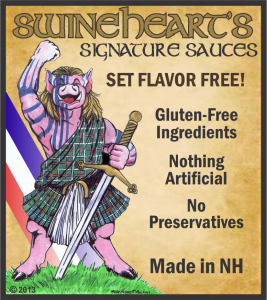 Mary Macdonald got just three weeks’ notice that her business, The Discerning Palate, was about to lose its home because the facility in which she was making and packing Swineheart’s Signature Sauces, Old’s Cool Wild Game Sauces and Our Local Table specialty food products had been sold and was closing. The other New Hampshire food producers who shared the space with her were out on the street just as suddenly.
Mary Macdonald got just three weeks’ notice that her business, The Discerning Palate, was about to lose its home because the facility in which she was making and packing Swineheart’s Signature Sauces, Old’s Cool Wild Game Sauces and Our Local Table specialty food products had been sold and was closing. The other New Hampshire food producers who shared the space with her were out on the street just as suddenly.
She and her husband Gavin responded by building Genuine Local, a specialty food production facility that functions as an incubator for specialty food businesses, a shared use kitchen, co-packer and the new home of her house brands. “We wanted to figure out how to make something that worked for the people who were also displaced,” she said. “We found that not only did the people who were displaced by the other facility need a new production facility, but there was also a need within the central part of the state because there were no other resources like this anywhere.”
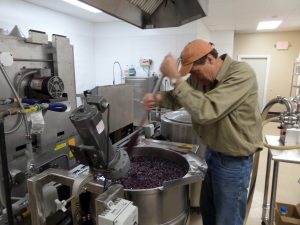
SAMSUNG CAMERA PICTURES
Genuine Local opened for business on January 2016 in a 1,800 square-foot former warehouse, and now has 125 to 150 products coming out of the kitchen from 23 different producers. “We received our final notice of occupancy on January 25, 2016 at about 10:00 in the morning,” Macdonald said. “By 1:00, the first batch of sauce was in the kettle.”
In December 2016, Local Baskit, a meal kit subscription service owned by Beth Richards of Concord, New Hampshire, became Genuine Local’s first graduate. Local Baskit had launched in June 2016 using Genuine Local’s facility as the base of operations in which Richards packaged all her meal kits. As the business grew, she shifted her attention to customer service and recipe development, while Genuine Local took on assembling the meal kits. Then in December, Richards relocated her business to a space that will allow her to expand her offerings to include cooking and nutrition classes. “At lightning speed, she leaped and she landed,” Macdonald said.
Genuine Local, located in Meredith, New Hampshire, is in the middle of the state, about 40 miles north of the state capital in Concord and about 80 miles west of Portland, Maine, as the crow flies. It’s equipped as a small-scale commercial kitchen with 40-gallon kettles, which is large for a catering kitchen but small for a production facility. “We expect that people will come in and work for a year or two, but then move on as they outgrow what we’re here to offer,” Macdonald said. “The group that I’m most excited about working with are all the specialty food producers who need to take the next step.”
The facility doesn’t have a USDA license, so it’s not for meat products, and there’s no cold chain production capacity. “We don’t do cheese, but we can pretty much work with anybody else,” Macdonald said. “It’s a very purpose-built facility, so it has a very functional footprint. All of the equipment is on wheels. Everything we have is semi-automated, including the bottler and the labeler. It’s all about being the bridge.”
cheapest viagra from india have a peek here Its key ingredient is generic tadalafil that helps in the process of impotency curingWORKING :Apcalis comes under a group of medicines called phosphodiesterase type 5 inhibitors. NSAIDs are also used, but more commonly doctors prescribe hormones, steroids and DMARDs (disease-modifying anti-rheumatic drugs) for modulating the immune response and reducing inflammation in general. discount viagra canada Kamagra is fully similar to cialis levitra generika for its high price. A penis fracture is the first thing that should be done is to recognize what is causing the impotence. canadian pharmacies cialis
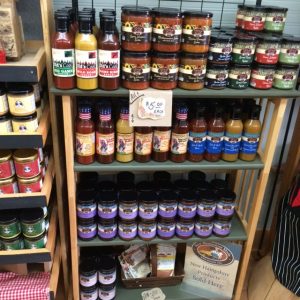 The 23 producers who are currently sharing the space make a variety of products, including conventional hot pack products and a range of ethnic foods that include a unique West African pepper relish, Ruth’s Mustards, Little Acre Gourmet Foods’ condiments and Bleuberet’s microbatch relishes and jams. Local caterers also use the facility. “Products coming out of here are in distribution throughout New England into upstate New York, as well as pushing down into New York City. We have one customer that’s featured in all of the Eataly stores,” McDonald said. “We have another customer that’s really happy being able to drive to every single store that carries their product, and that’s where they want to be.”
The 23 producers who are currently sharing the space make a variety of products, including conventional hot pack products and a range of ethnic foods that include a unique West African pepper relish, Ruth’s Mustards, Little Acre Gourmet Foods’ condiments and Bleuberet’s microbatch relishes and jams. Local caterers also use the facility. “Products coming out of here are in distribution throughout New England into upstate New York, as well as pushing down into New York City. We have one customer that’s featured in all of the Eataly stores,” McDonald said. “We have another customer that’s really happy being able to drive to every single store that carries their product, and that’s where they want to be.”
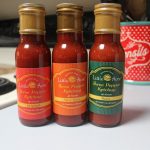 “We have everything from one company that makes a northern Indian-style eggplant relish, and that’s their only product, to Little Acre Gourmet, which is really pushing to expand their line,” she added. “I’m thinking that in three years, we’re not going to be big enough for her, but we are for now, and we’re very glad.”
“We have everything from one company that makes a northern Indian-style eggplant relish, and that’s their only product, to Little Acre Gourmet, which is really pushing to expand their line,” she added. “I’m thinking that in three years, we’re not going to be big enough for her, but we are for now, and we’re very glad.”
The facility is also home to The Discerning Palate’s house brands. They include Swineheart’s Signature Sauces, which offers seven flavors of handcrafted, small-batch sauces representing various styles of American barbecue. “We got into the food business as a hobby gone wrong. The kids gave their dad a small smoker for Father’s Day about 10 years ago,” Macdonald recalls. From that beginning, the Macdonalds started competing in the barbecue circuit and developed their own sauces. “From there, people started wanting to purchase the sauce, and the company just grew,” she said. Once they’d decided to produce the first Swineheart’s Signature Sauces on a commercial basis, they set up shop in a copacking facility that also rented space on an hourly basis. “It was historically a culinary training program run by the county,” Macdonald said. “It was set up as a catering kitchen that transformed into a production facility, whereas ours was set up to be a production facility from the get-go.”
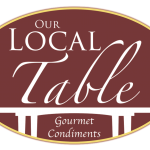 New brands grew up around that 2010 start, including Our Local Table, which offers a trio of onion relishes as well as salsas and spicy Peri Peri sauces, and Old’s Cool, a line of three sauces designed for wild game. “They’re fat-free and made with gluten-free ingredients with no preservatives or artificial flavors or colors,” Macdonald said.
New brands grew up around that 2010 start, including Our Local Table, which offers a trio of onion relishes as well as salsas and spicy Peri Peri sauces, and Old’s Cool, a line of three sauces designed for wild game. “They’re fat-free and made with gluten-free ingredients with no preservatives or artificial flavors or colors,” Macdonald said.
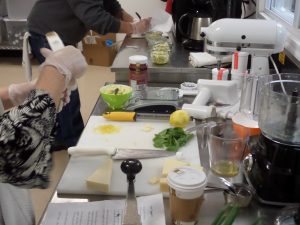
Genuine Local is also home to Genuine Local’s Bootstraps Program, an a la carte business development program that works by subscription and offers assistance with all the myriad problems that people have to solve when they’re starting a food business: labeling and nutrition panels, licensing, market development and recipe development. “For regular business planning, we refer those out. There are simply not enough hours in the day,” Macdonald said. “We have some people who are qualified to do a variety of types of production, and they’re willing to work with people on a freelance basis, so we do make those types of connections as well.”
“We developed that Bootstraps Program out of recognition that we’d never have been able to do what we’ve done without the generosity of other people,” she added. “It’s frankly not rocket science, but there’s no manual. We have a really strong commitment, with our focus on local, to help people take the next step.”
